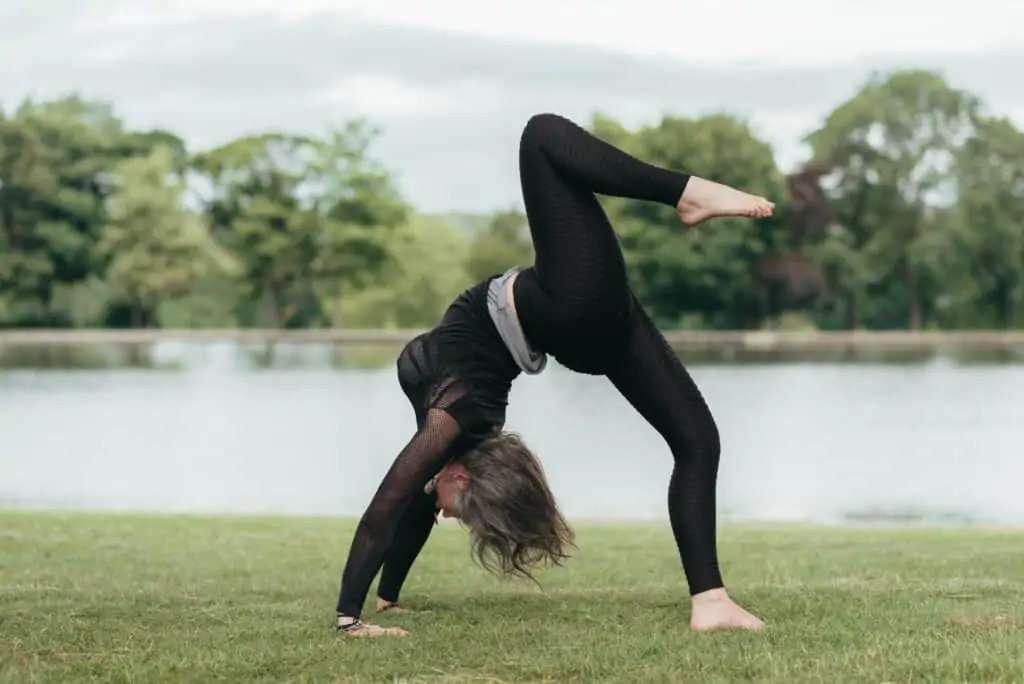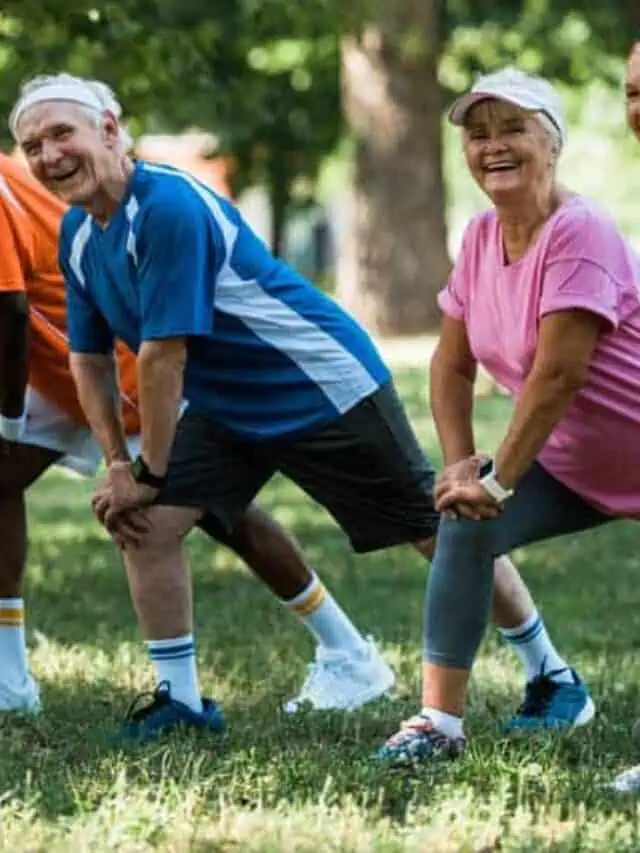Balance exercises for seniors become very important as they age because, with time, the elderly begin to lose confidence.
Bad balance is a significant factor in the ageing process. A low-protein diet and lack of balance training can diminish muscle power and endurance. Your quality of life may decrease as your eyes, reflexes, and hearing aren’t as sharp as they once were.
Table of Contents
What causes poor balance in seniors?
- Obesity affects many people.
- Arthritis and diabetes
- Insufficient physical exercise
- Medications that cause you to feel dizzy or exhausted
- Injuries, which are often caused by falls
Besides being one of the regular challenges of ageing, balance problems are also a concern for people with Parkinson’s disease, multiple sclerosis, and osteoporosis, so balance training is even more critical.
One of the most critical reasons older people seek medical attention is balance control. Inner ear disturbances are frequently the cause. For example, vertigo is a common symptom that causes you or the objects around you to feel like they are spinning. A stroke, elevated blood pressure, low blood pressure, a brain injury, or some prescriptions may also cause balance disorders.
Age and balance problems
All of this will render you weak on your feet and affect your quality of life. In reality, one out of every three people over 65 suffers a fall at least once a year. A severe injury, such as a bone fracture, results in 10% and 15% of these falls.
Furthermore, fearing falling may lead you to stop engaging in daily activities like walking or visiting friends. Most stay home when people get older, and muscle strength decreases. Perhaps they are more at ease in their house, close to friends and relatives.
Why are balance exercises for seniors so important?
Recent research has demonstrated that balancing exercises for seniors, and strengthening and endurance workouts, reduce the likelihood of senior citizens falling. In case of an inevitable fall, allowing them to fall gracefully and prevent significant harm. A definite indication of improvement in the quality of life.
According to a study, specialized balance-focused fitness systems, like a balance board, decreased the number of falls that resulted in mild injury by 37% and the number of falls that resulted in serious injury by 43%. In addition, approximately 61% of seniors who fell while doing balancing exercises could avoid breaking a bone due to the injury. Regular exercise even results in stronger bones at whatever age.
What part of the body controls balance?
Balance performance, agility, reaction time, and fine muscle function are regulated by the cerebellum, located towards the back of the brain (e.g., walking). It also helps to maintain good posture and stability.
What is the benefit of balance?
- Fall prevention: Balance exercises can help older people with balance issues and women with low bone mass prevent falls.
- Improved Posture: It also assists with postural control after a stroke.
- Coordination Improvement: You need strong coordination to do just about everything, including driving, getting out of a chair, and bending down to tie your shoes, even though it doesn’t occur to you. Solid legs and maintaining balance make all the difference in those and countless other daily activities.
How can seniors improve their balance?
Elders can benefit from a variety of easy balance exercises for seniors. Individual fitness, including strength, endurance, and flexibility, determines the type of simple balance exercise most suitable.
What is the best exercise for balance?
There are various types of exercises for balance control.
Yoga, Tai Chi & Pilates are the best examples of balance exercises.
Many senior citizens who are moderately stable and active enjoy Tai Chi and gentle yoga in their daily life.
Slow, deliberate motions increase stability, and cognitive functions and reduce the risk of falling. The practitioners of Tai Chi say it is the best exercise for balance.
“By far the most significant advantage for older adults is a drop in trips,” says Chang, who has participated in many studies that indicate tai chi increases balance. He is a Tai Chi instructor at a Harward-affiliated general hospital.
So, what’s the secret? Tai chi incorporates the physical criteria for remaining upright—leg strength, endurance, range of motion, and reflexes—all deteriorate with age.
“The slow, careful footwork gives more consciousness to the soles of the feet,” Chang continues, “not just in terms of contact sensitivity of foot to the surface, but also in terms of awareness of changes in ankle angle and weight distribution.”
You get more experienced with balancing in various positions as you continually change your weight back and forth. “On the ground, it’s like doing tightrope walking. You’re working on your equilibrium and still training your body to be more responsive and strong, “Chang explains.
Similarly, yoga poses include long, careful motions that can improve posture and movement and help avoid slips. Balance, stability, agility, brain function, and strength are also improved. Since falls are the leading cause of senior injuries, yoga will help you gain mobility to get around more comfortably. In addition, it improves various cognitive functions, saves us from fall-related injuries, and gives us clearer thinking.
Standing Pilates is a weight-bearing movement that stimulates the hips and leg muscles to stabilize bones. It’s one of the best opportunities for seniors to strengthen their balance and proprioception because it’s a full-body exercise (the ability to know where and how your body is oriented in the surrounding space). Standing Pilates involves shifting the body’s weight.
Various other basic at-home physical activity programs can add to our exercise regimen with little or no preparation and improve coordination and improvement in our daily lives. In addition, these simple exercises consistently improve balance and confidence and reduce fall-related injuries.
You can get some more information on fall prevention here.
Does walking improve balance?
Walking, strength training, and specific workouts, in conjunction, can improve balance and avoid falls, particularly in older adults. Walking aids in the development of lower-body coordination, which is an essential component of proper balance.
How can exercise help seniors improve strength and balance?
Balance exercises will enhance posture, flexibility, and coordination while building muscle. These advantages will help you stop slipping or bumping into items and hurting yourself. If your trip, you may not recover as quickly as you would if you hadn’t taken precautions.
It’s essential for older adults to feel confident in their physical activities and not feel nervous or afraid of falling. Coordination, leg stability, and ankle agility are all enhanced with these workouts. Balance exercises can help improve mental functions, such as memory and spatial cognition, and have physical benefits, such as improved stability.
Some Easy Balance Exercises for Seniors
Stand Still on One Leg
Hold the back of a stable chair in your hands. Raise your right foot and keep your balance on your left. Switch feet after holding the spot for as long as you can.
Tight Rope Walk
Make sure your limbs parallel the floor by holding them straight from your sides. Walk in, a straight line, pausing every time you take a foot off the ground for one or two seconds. To keep your head straight and maintain your focus, focus on a distant object. Complete 15 to 20 steps.
Heal to Toe
Place your right foot in front of your left, with the heel of your right foot touching the tops of your left foot’s toes. Place your weight on your heel while you move your left foot in front of your right. Shift your weight to your toes after that. Taking 20 steps in this direction. Initially, you might lose your balance doing this exercise, but you will get used to it, which is very effective.
Tree Pose
Move your weight to your right foot from a standing stance. Place the sole of your left foot on your calf, shin, or thigh, or put your left foot to the side with your heel raised. Place your hands in any convenient position for you. Hold the position for up to 1 minute. And repeat it with the other hand. You will need support initially for this pose. Keep yourself calm, and it will be easier.
Back Leg Raises
Stand holding a chair. Straighten your right leg backwards. Do not bend your legs when doing this. Hold this pose briefly before lowering the leg to the ground. Repeat for the other leg. Repeat ten times.
Rocking Chair
Stand tall with your feet apart and firmly planted in the ground. Raise your left leg off the ground as far as possible, sideways, by shifting your weight to your right foot. Keep the position for a minimum of 10 seconds. Return the leg to its original position and repeat with the other foot. Rep each leg five times. “
High Knee
Stand with both hands on the back of the chair. As high as possible, lift your left knee. Lower it and raise your right knee. For a total of 10 repetitions, alternate between sides. Feel the stretch in your hamstrings.
Wall Push-ups
Start by standing in front of a wall with an arm’s length between you and the wall. Gently lean forward with your hands on the wall. When trying to bring your body against the wall, keep your feet firmly on the ground. Return to your original spot, which has your arms extended out straight. Repeat ten times, initially.
Toe lifts
Place your arms in front of you and stand upright. Lift yourself as much as you can on your toes, then slowly lower yourself. Avoid leaning too far over in your chair. Ten times, lift and lower yourself. It is a good exercise for calves and balances too.
Shoulder Rotation
It is a quick turn of the shoulders, first five times forward, then five times backwards. It relaxes your shoulders, and you feel more balanced.




